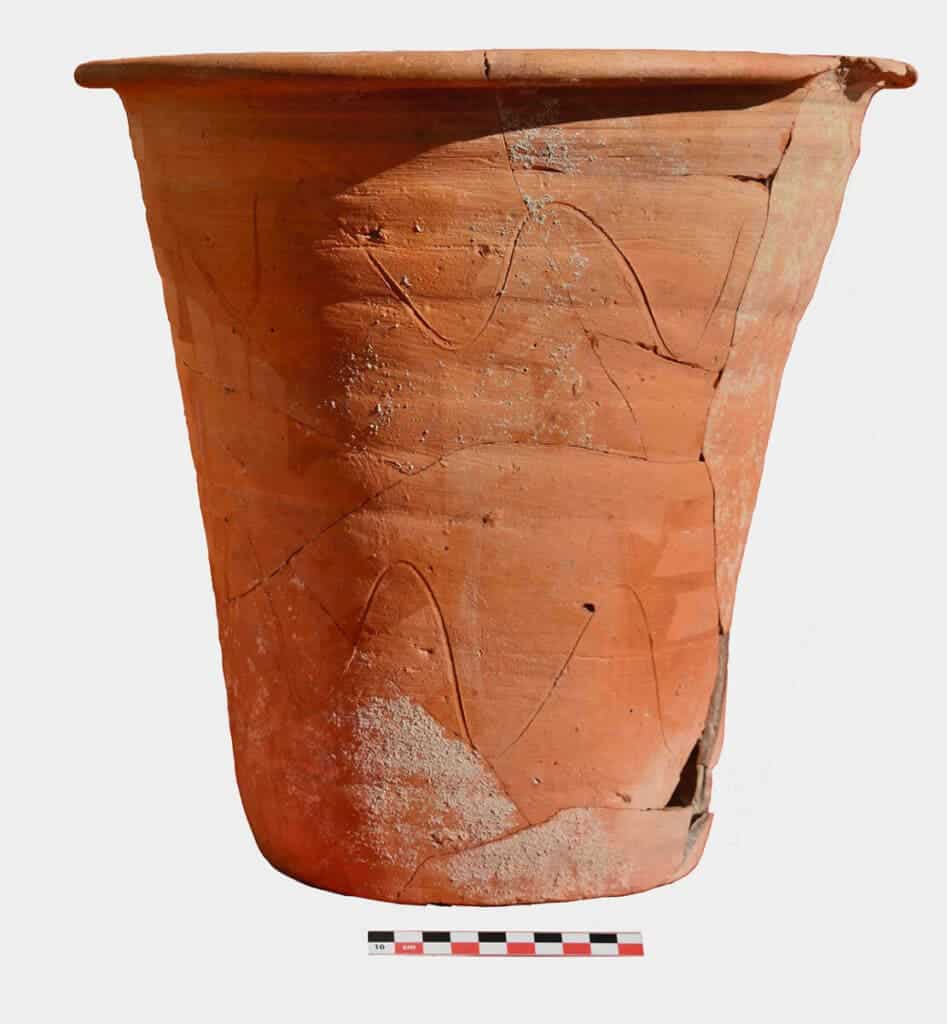Archaeologists from the University of Cambridge analyzed a vessel found from a 5th-century Roman villa in Sicily — and on the ceramic material on the inside, they found the eggs of whipworm, a parasitic roundworm. Since the whipworm (Trichuris trichiura) is an intestinal parasite of humans, this suggests that this type of pot (which was quite common) was used as a portable toilet, not a storage jar.

Usually when you find a whipworm, you’re not happy. The parasitic worm causes trichuriasis, one of the infamous neglected tropical diseases. But for researchers doing microscopy on the Roman vessel, things were quite different.
“It was incredibly exciting to find the eggs of these parasitic worms 1,500 years after they’d been deposited,” says co-author Tianyi Wang, University of Cambridge, who took part in the microscopy work.
“We found that the parasite eggs became entrapped within the layers of minerals that formed on the pot surface, so preserving them for centuries,” says co-author Sophie Rabinow, also of the Cambridge team.
This type of pot was quite common across the Roman empire, and several of them have been uncovered at various sites (ceramics, in general, are one of the most common types of Roman findings). Without any information about what they could be, archaeologists simply assumed that they were used for storage. But the discovered parasites showed that this was not the case, and the pot was used for pooping.

“Conical pots of this type have been recognized quite widely in the Roman Empire and in the absence of other evidence they have often been called storage jars. The discovery of many in or near public latrines had led to a suggestion that they might have been used as chamber pots, but until now proof has been lacking,” says Roger Wilson, a professor in UBC’s department of classical, Near Eastern and religious studies who directs the Gerace archaeological project in Sicily where the pot was found.
The pot measures 31.8 cm in height (12.5 inches) with a diameter of 34 cm at the rim (13 inches). It was most likely used in conjunction with a chair under which the pot was set — a type of ancient Roman portable toilet, likely used in a spa.
“This pot came from the baths complex of a Roman villa. It seems likely that those visiting the baths would have used this chamber pot when they wanted to go to the toilet, as the baths lacked a built latrine of its own. Clearly, convenience was important to them,” says Piers Mitchell, the parasites expert who led the laboratory study.
The technique (looking for parasites in archaeological pottery) could be used to analyze other types of artifacts and with a bit of luck, get some clues about what they were used for — specifically, if they were used as toilets. Of course, this depends on how likely it was for Romans to be infected with some type of parasite.
“Where Roman pots in museums are noted to have these mineralized concretions inside the base, they can now be sampled using our technique to see if they were also used as chamber pots,” Mitchell concludes.
Lastly, the approach could also help researchers better understand the gut health of Romans by analyzing multiple pots and seeing what type of parasites (and how many) they can detect.
Journal Reference: “Using parasite analysis to identify ancient chamber pots: an example of the fifth century CE from Gerace, Sicily, Italy” by Sophie Rabinow, Tianyi Wang, Roger J.A. Wilson and Piers D. Mitchell. Journal of Archaeological Science: Reports doi: https://doi.org/10.1016/j.jasrep.2022.103349









